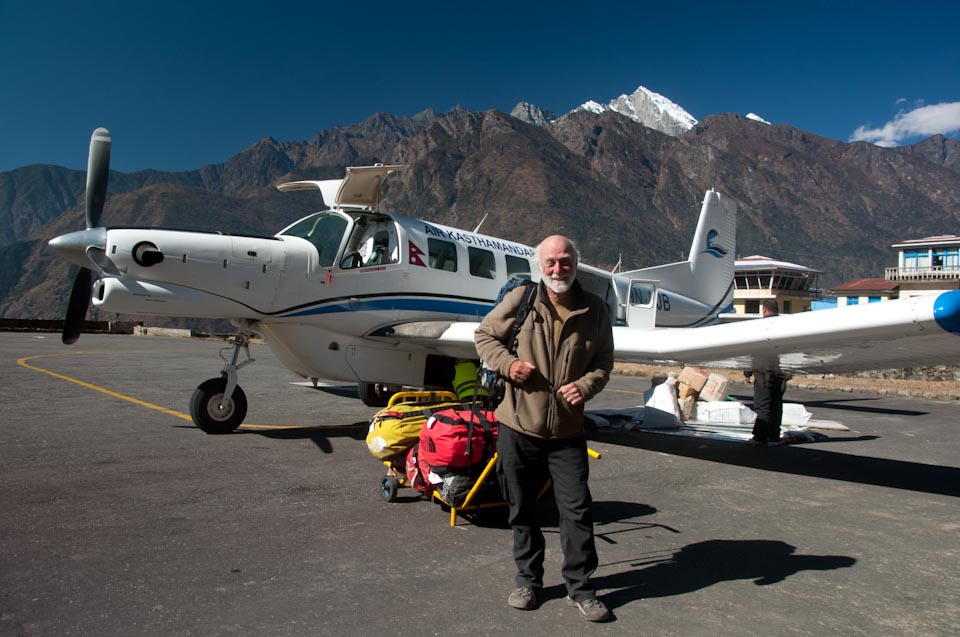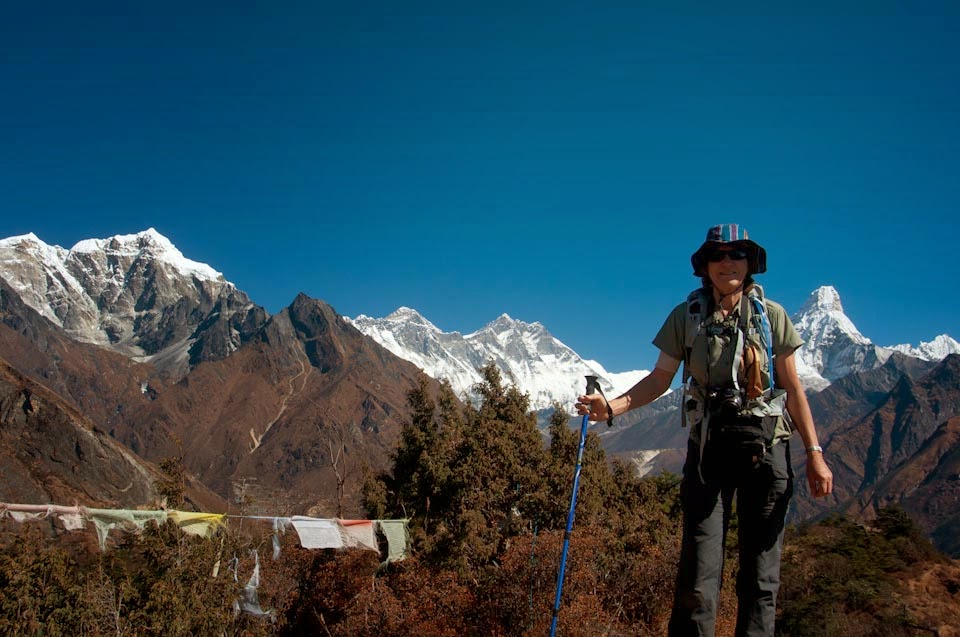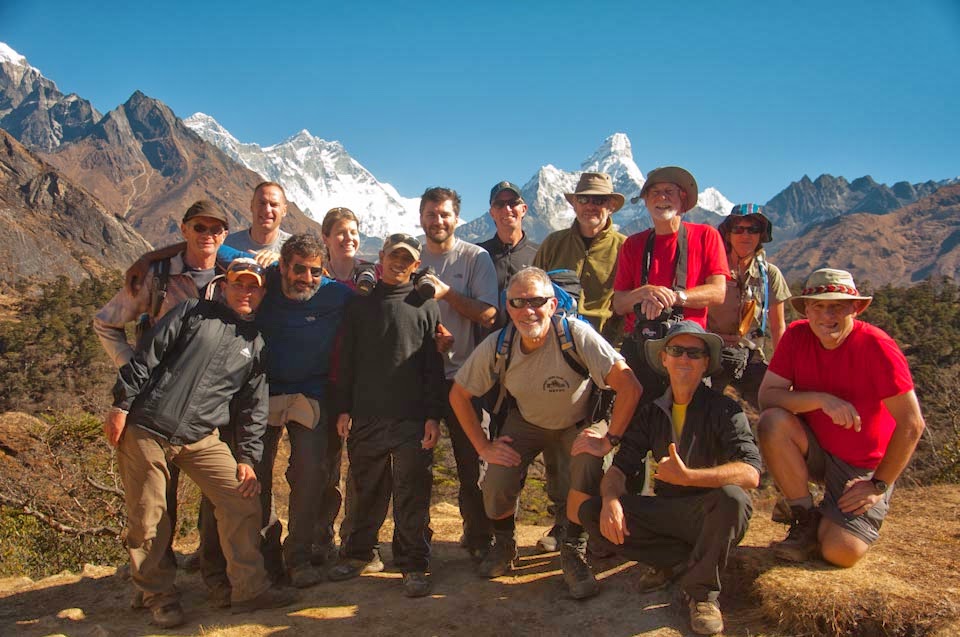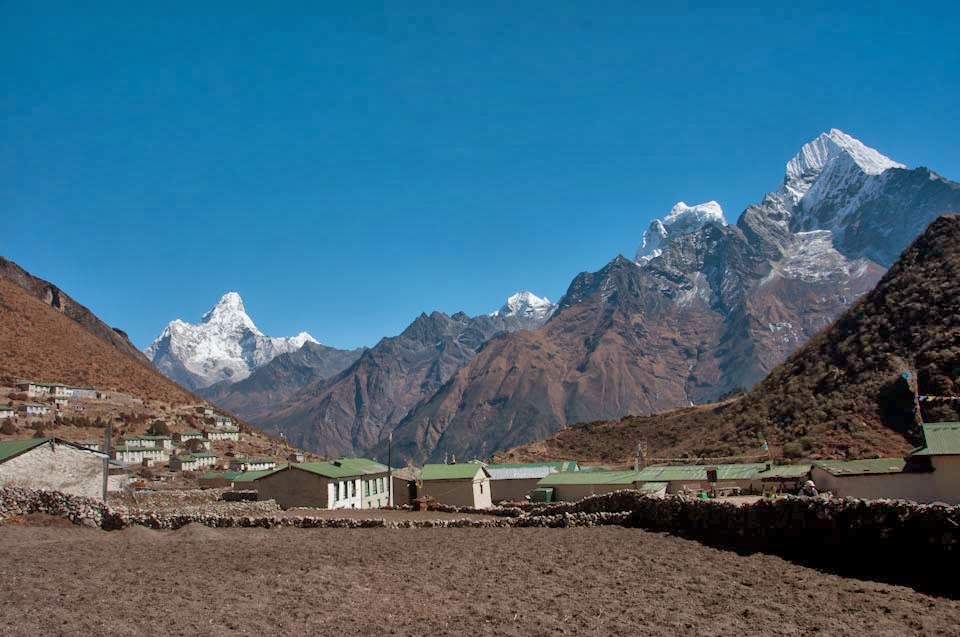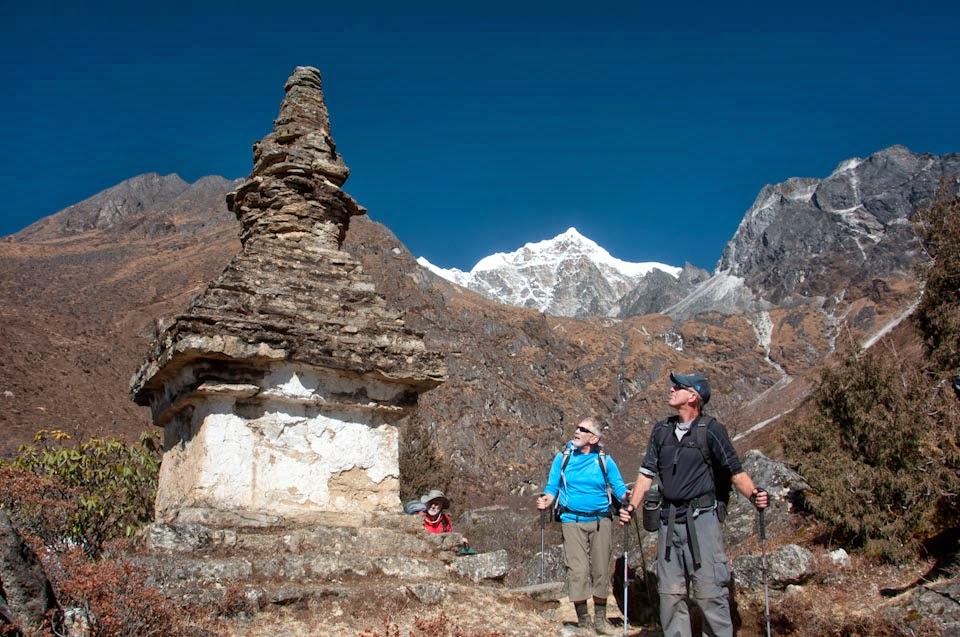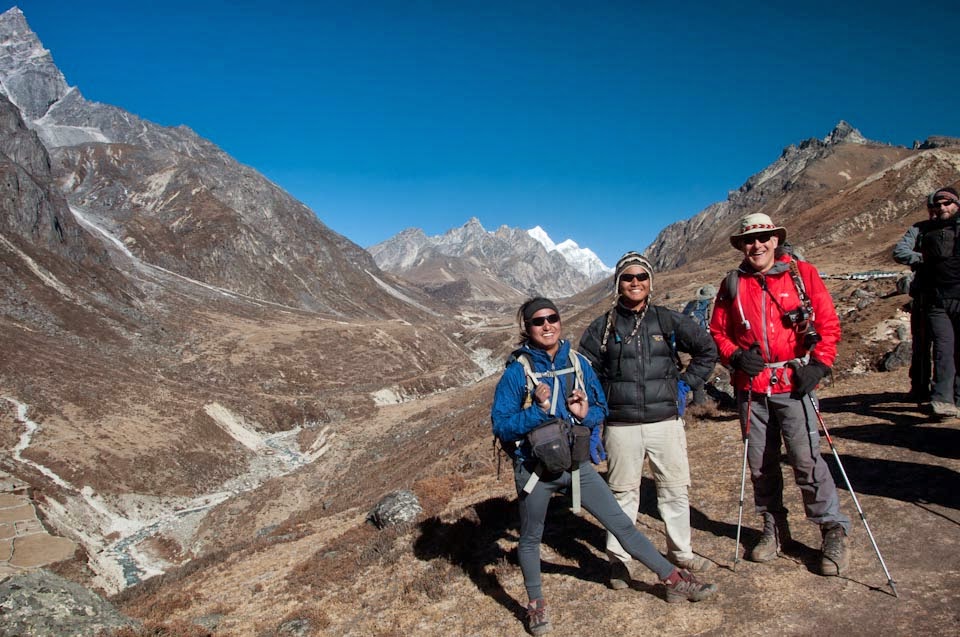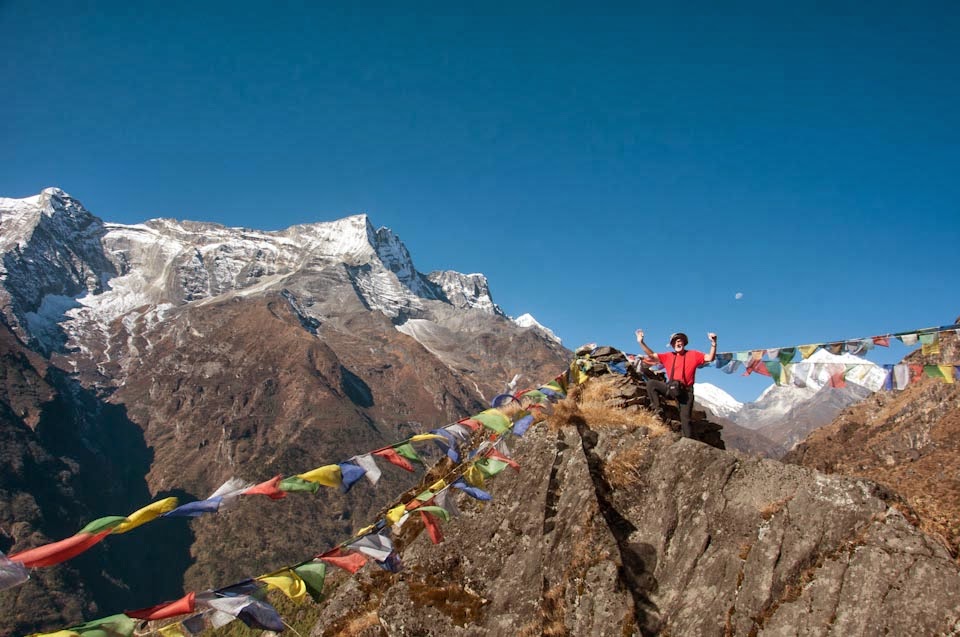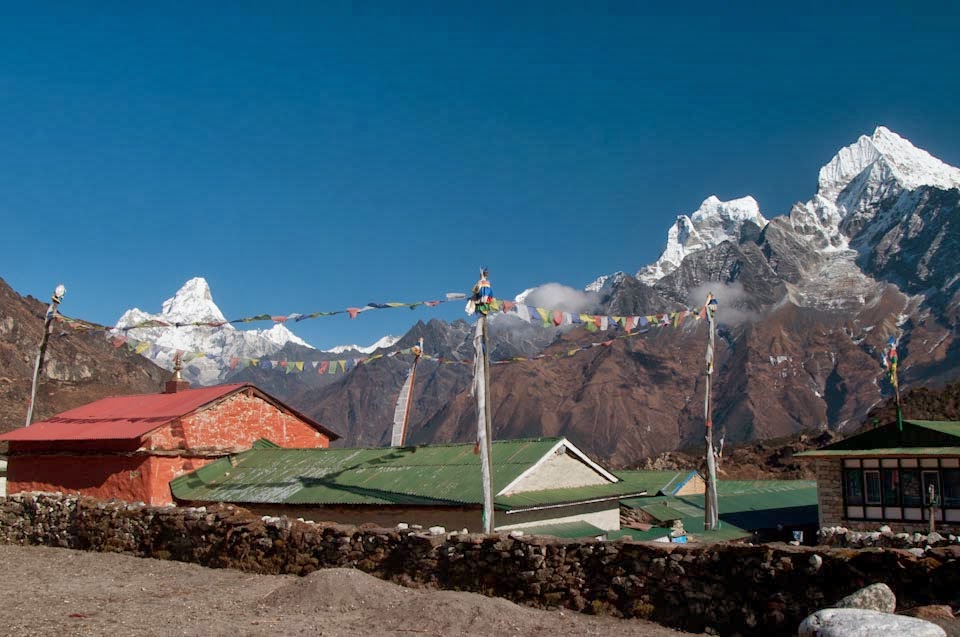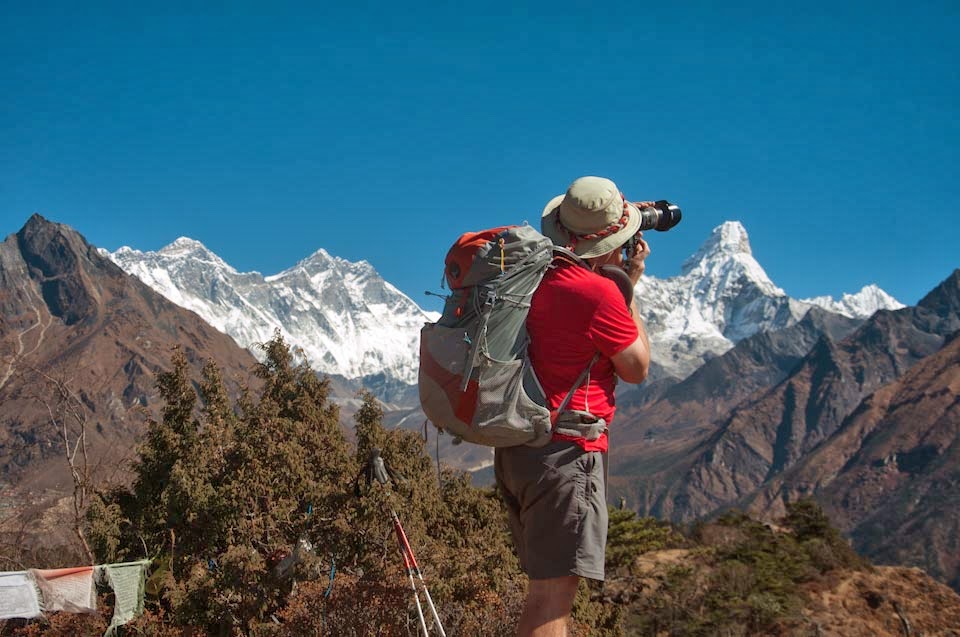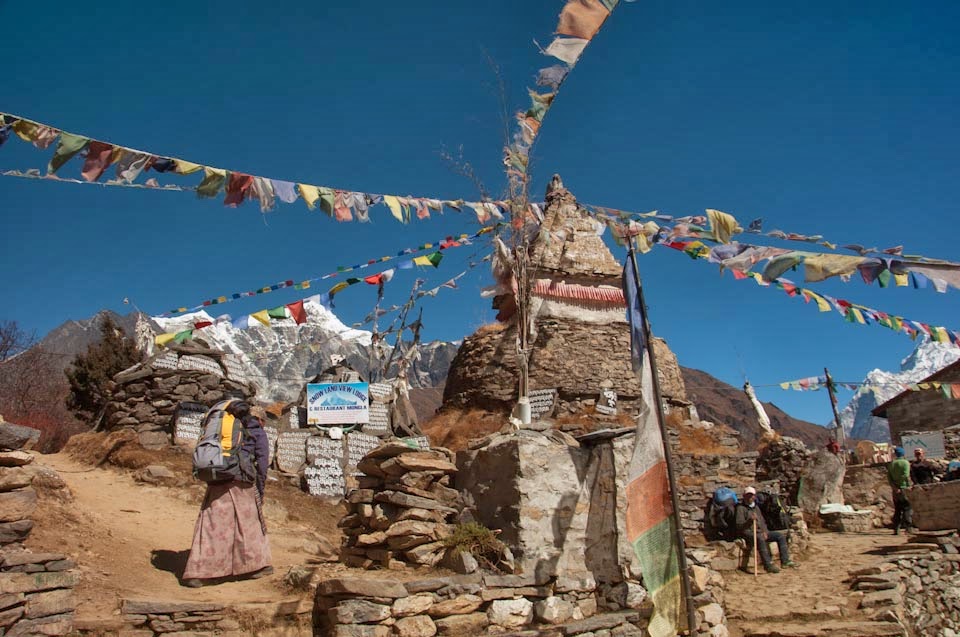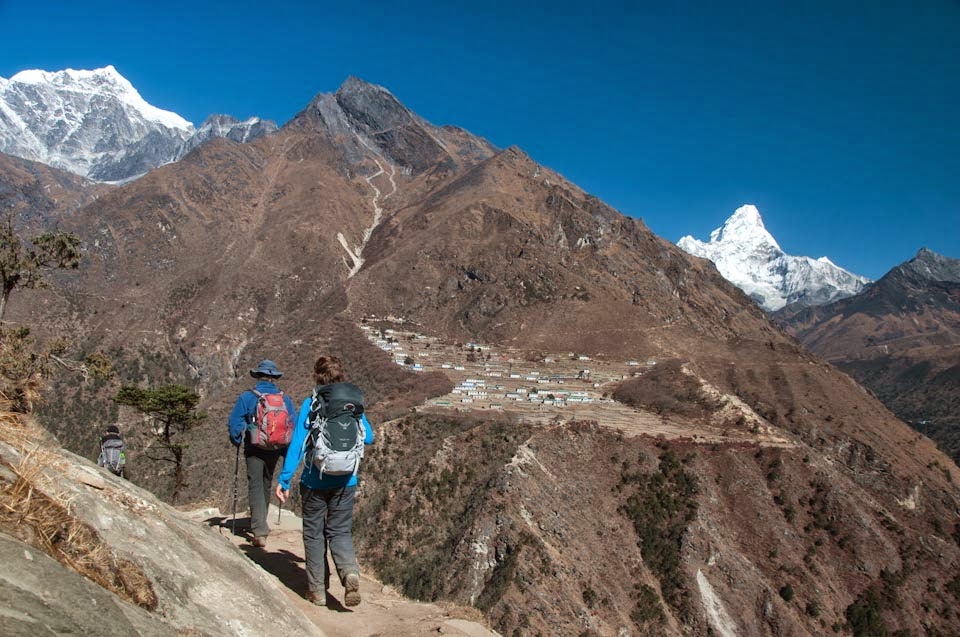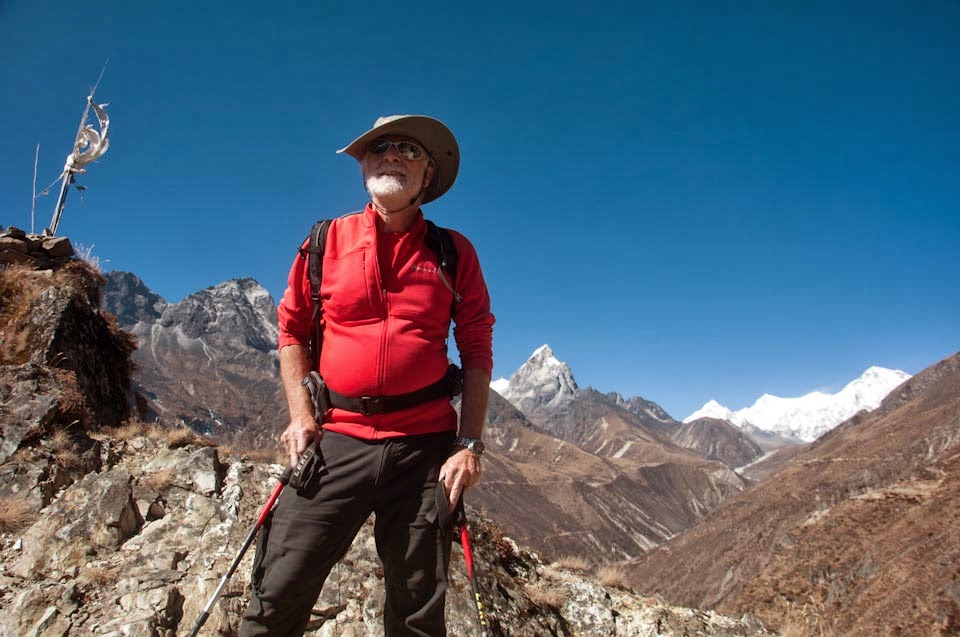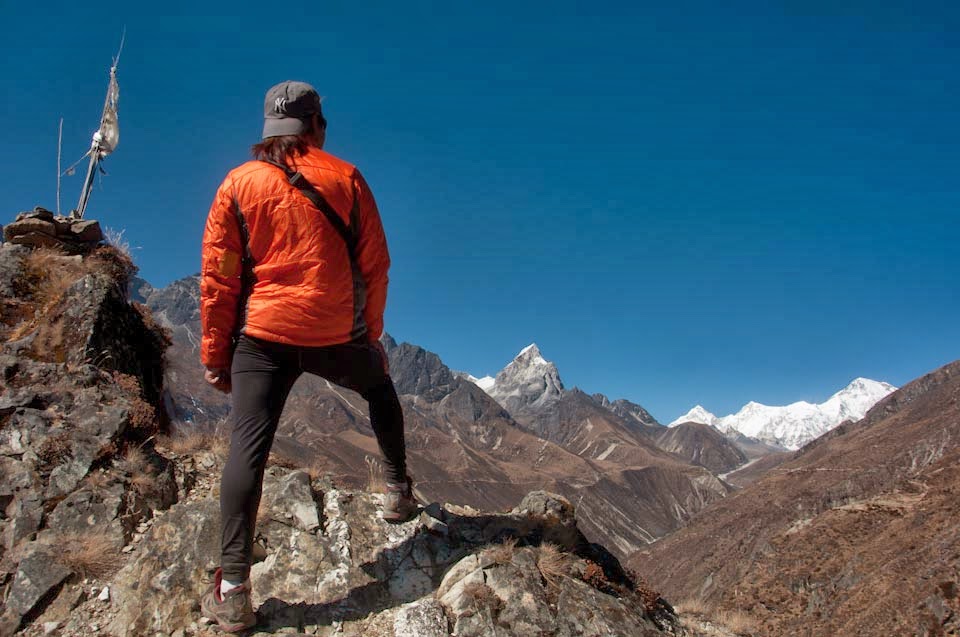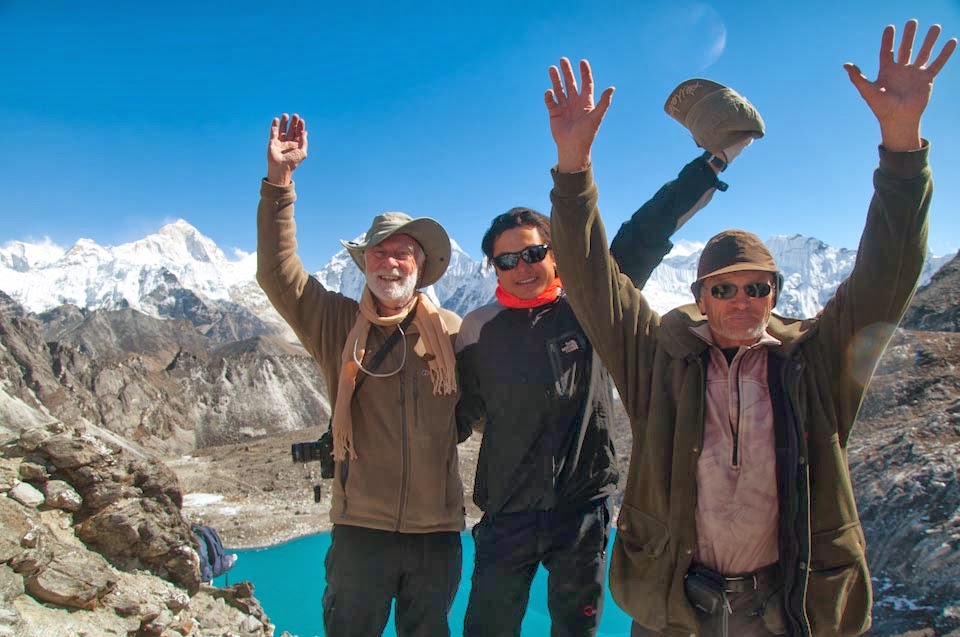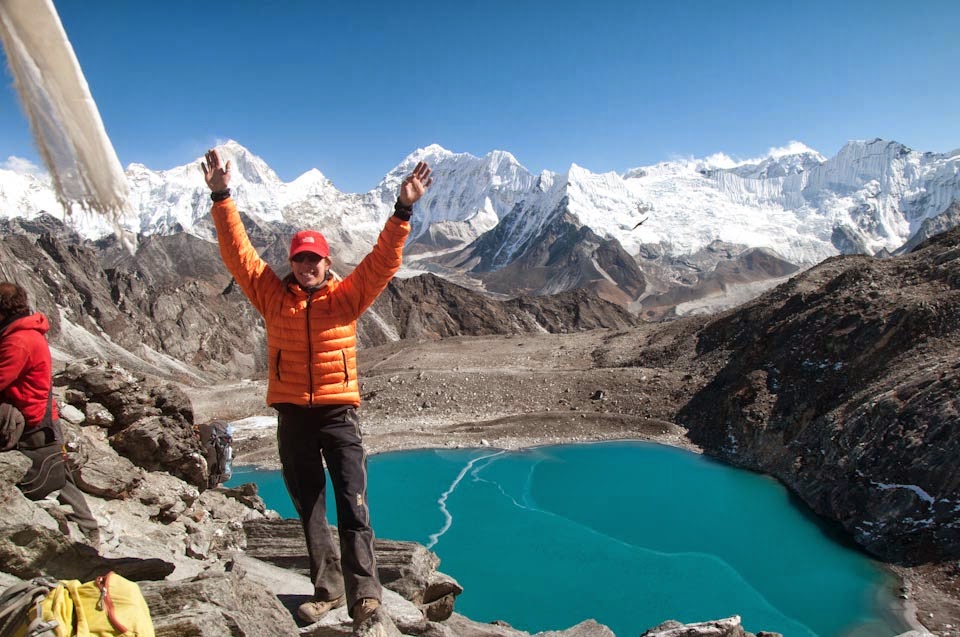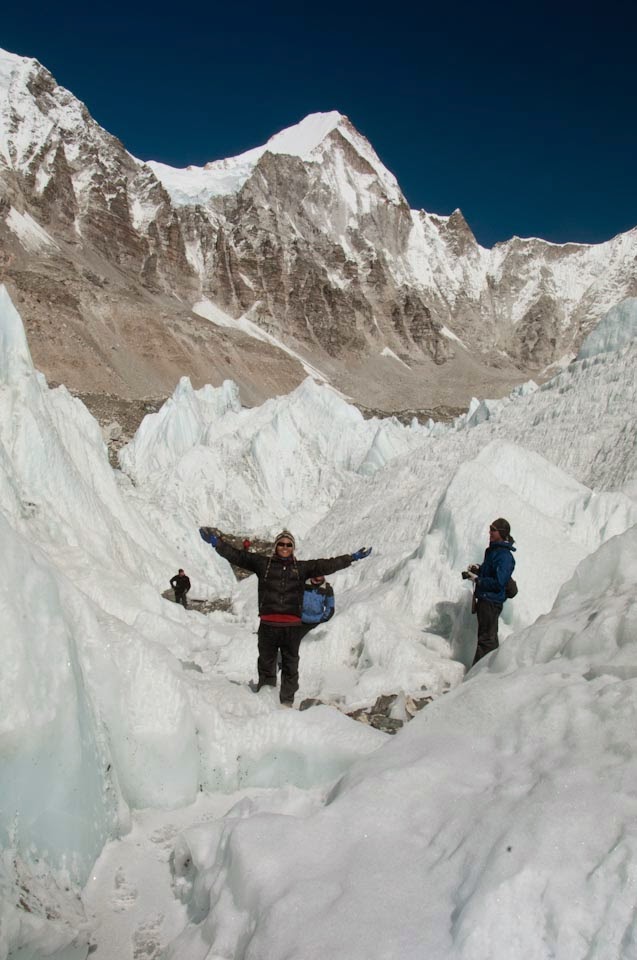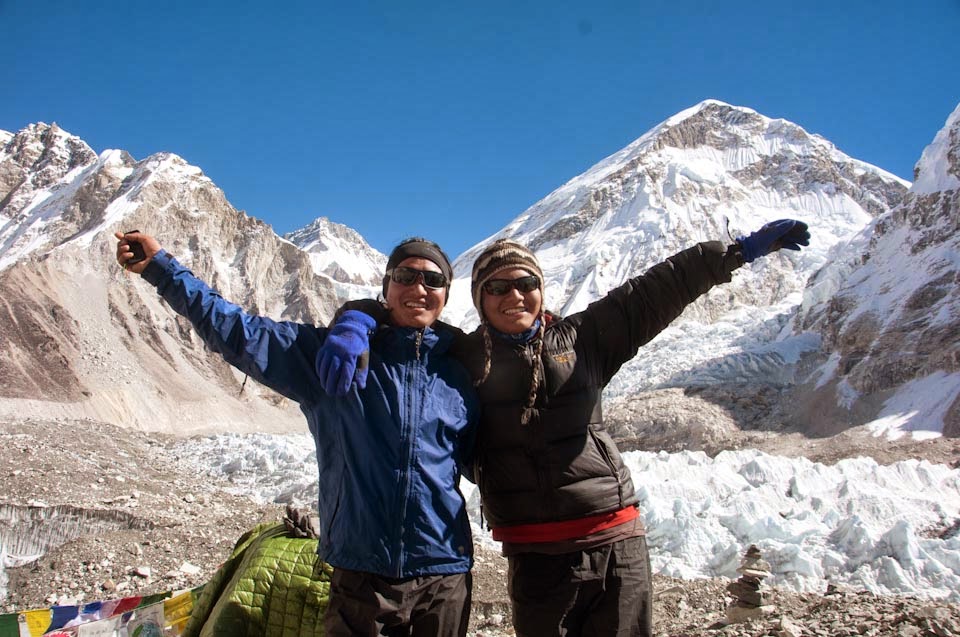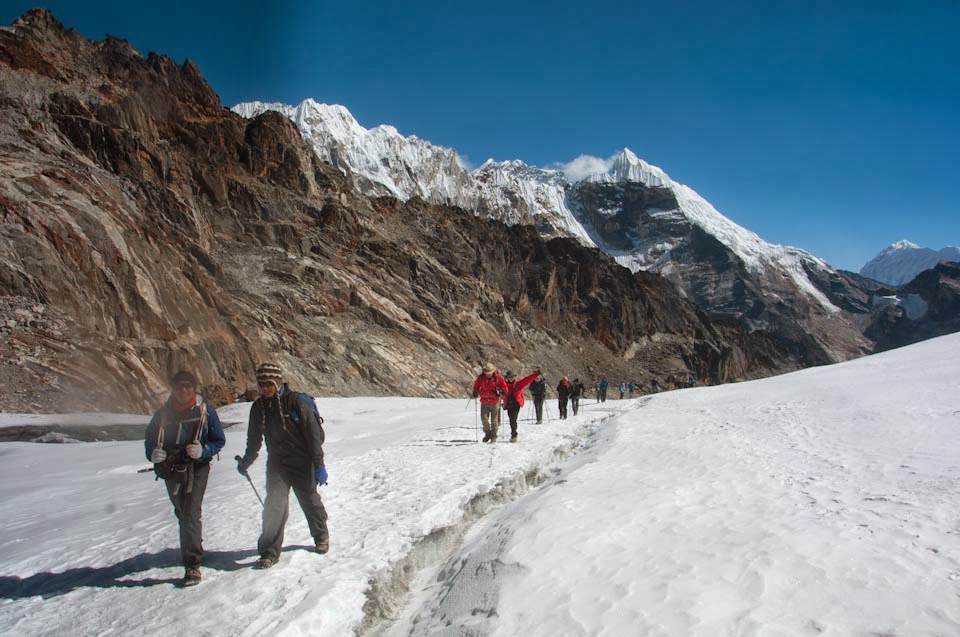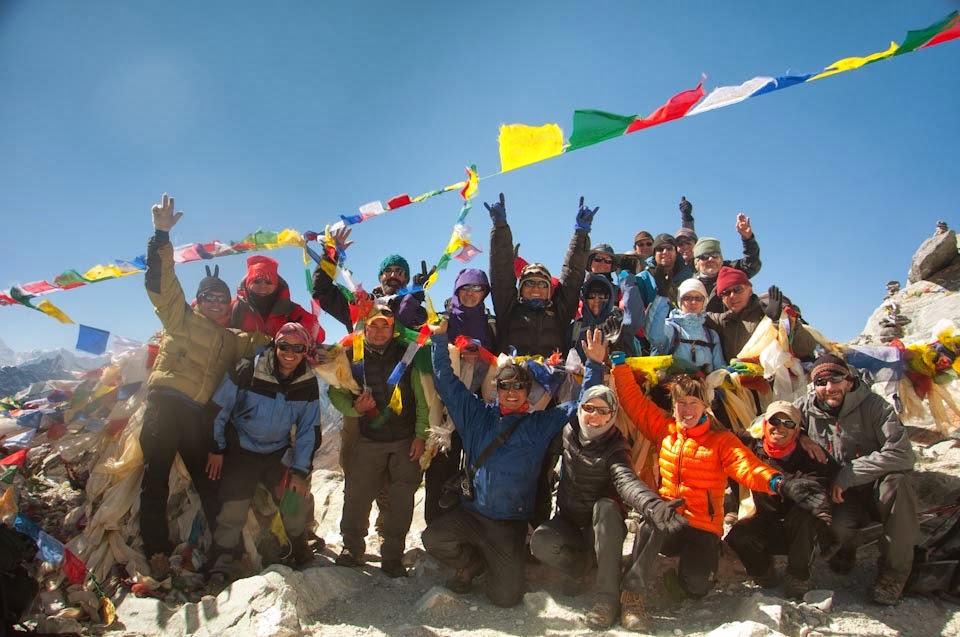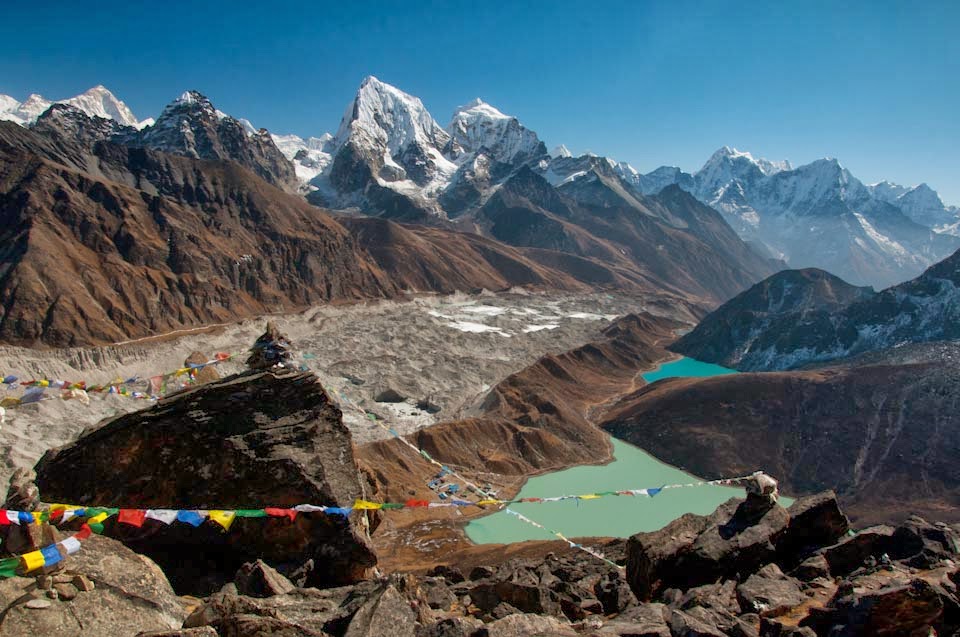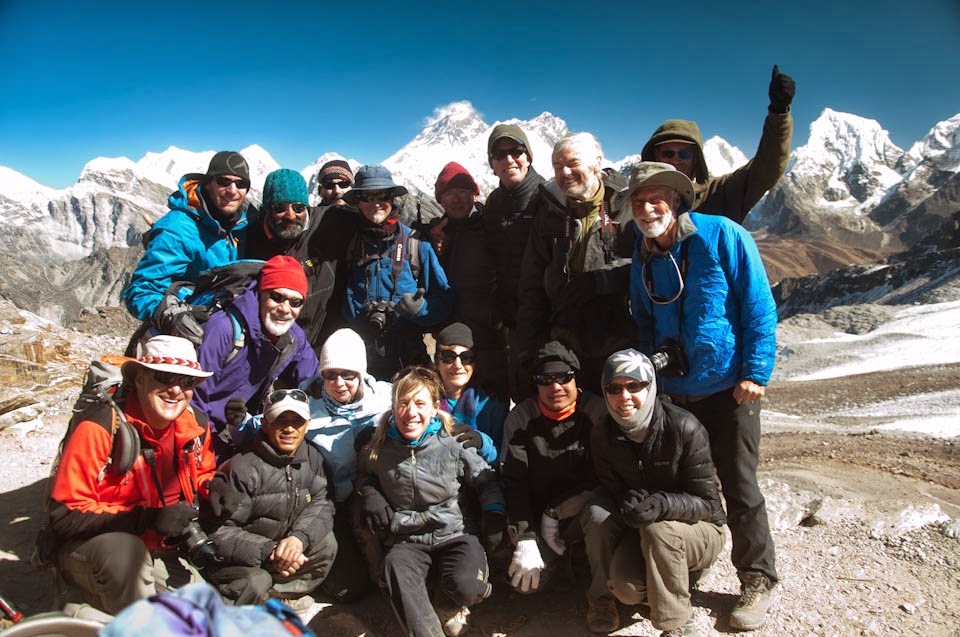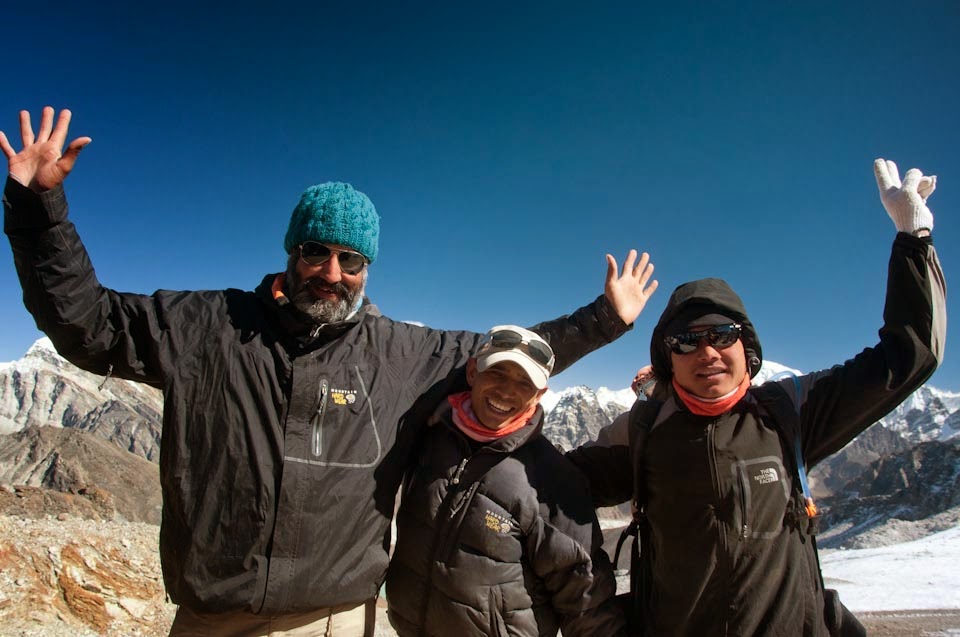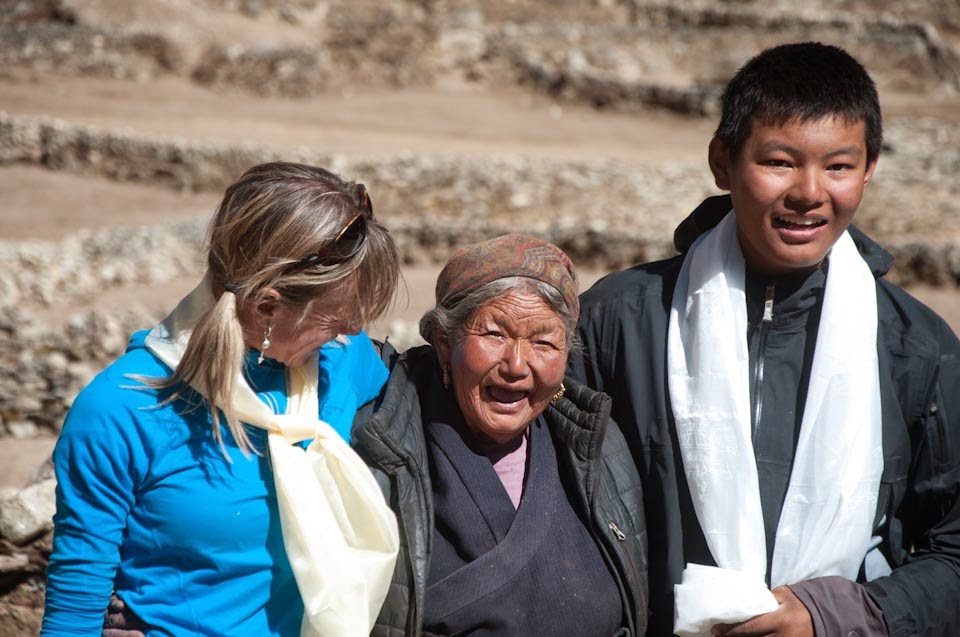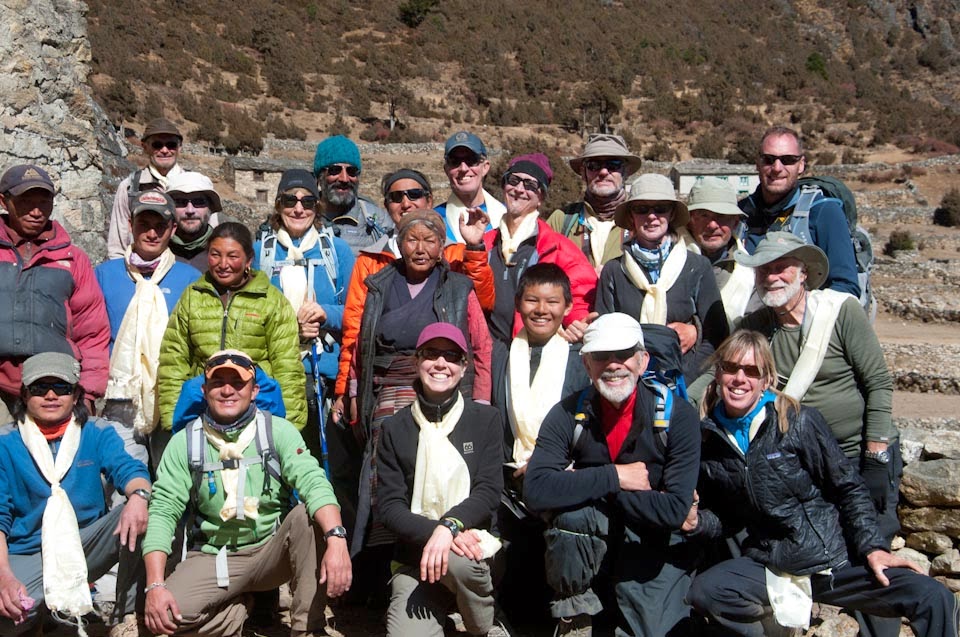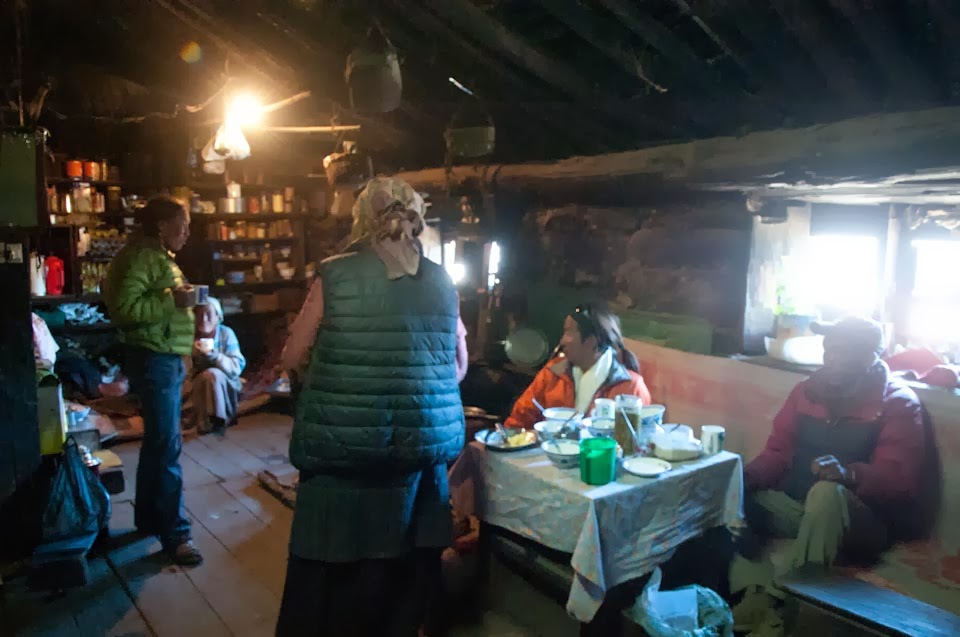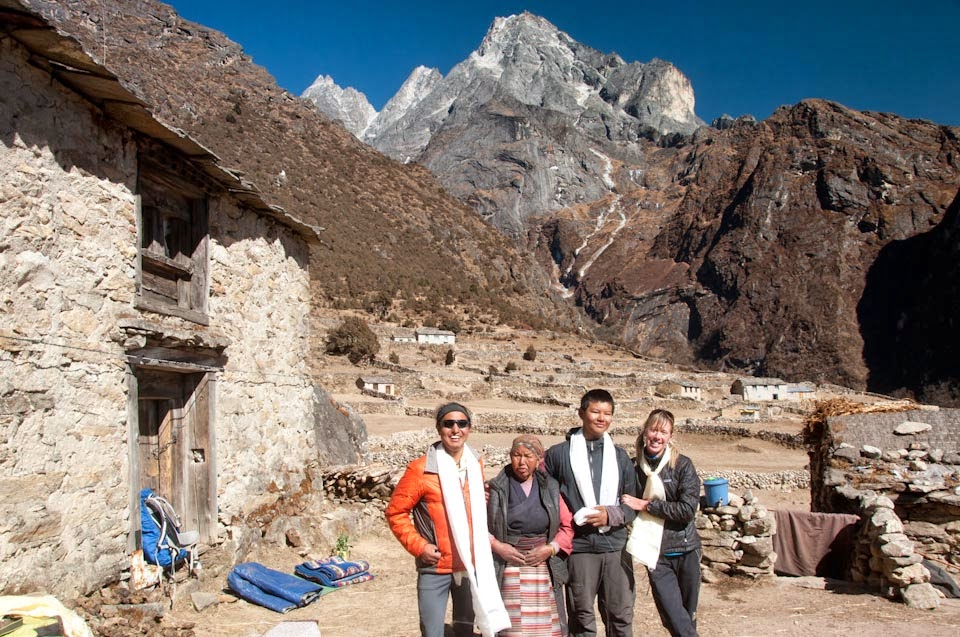EVEREST HIGH PASSES TREK 2012
Logan and Beaudesert Bushwalking Club Newsletter (Jan 2013) – by Jan Sammons
Kamzang Everest High Passes Trek
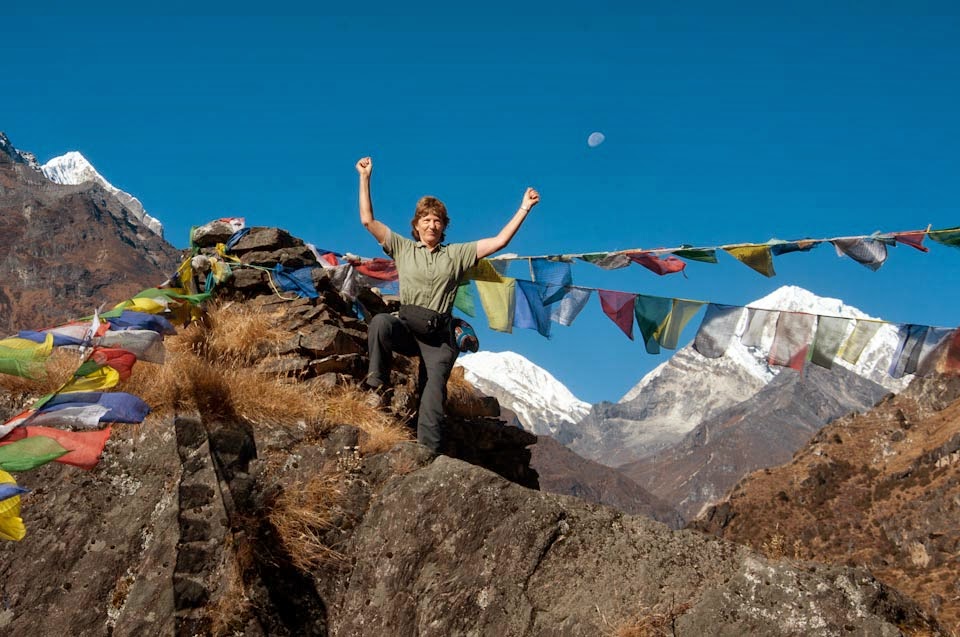
A wonderfully descriptive article that one of our popular Everest High Passes (November 2012) trekkers, Australian Jan Sammons, wrote for her bushwalking club newsletter and shared with us …- photos Kim Bannister
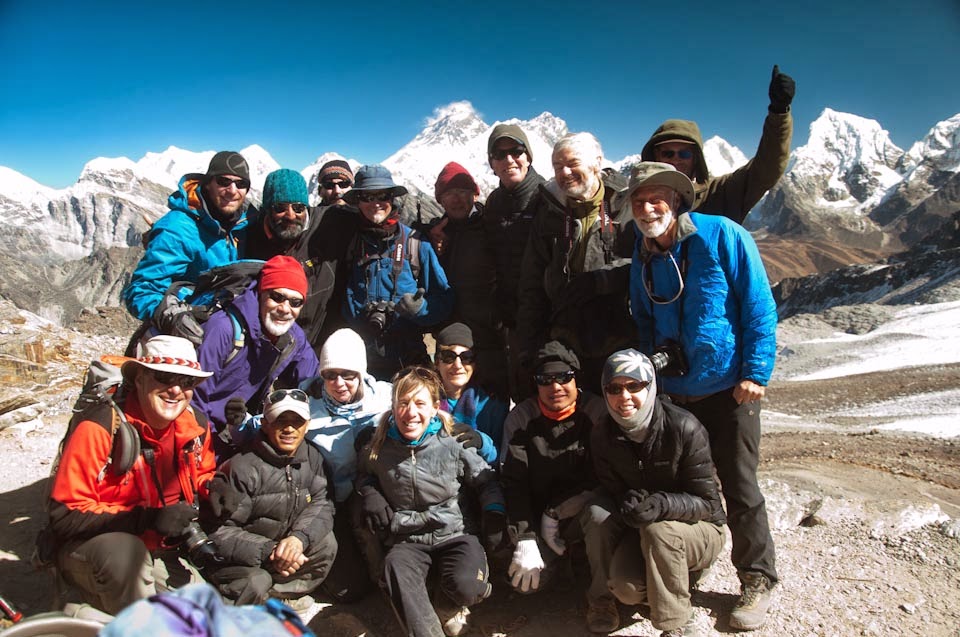
In 1993 Rob and I joined the Bushwalkers Club to get fit for what was to be a once-only trek in Nepal to see Mt Everest. However trekking in Nepal, and walking holidays in general proved to be very addictive, so in 2012 after much soul-searching as to whether I was too old to tackle an arduous trek, I decided on a 5th visit to Nepal to attempt the Everest High Passes trek. This is a 21 day trek which takes in Kala Pattar, Everest Base Camp and Gokyo Ri plus the Cho La and the Renjo passes, all of which are from 5300 to 5600m high. Rob, having been sick on the last 2 Nepal trips, opted to stay home while I went off on a solo adventure. Being in the “Senior citizen” category, I wanted to be as well-prepared as possible, so as well as the usual long walks and hills, I undertook altitude training twice a week through the Executive Excellence team at Wooloongabba-this involved 10 sessions of an hour on a treadmill wearing a full face mask which gradually reduced my oxygen intake so as to simulate being at high altitude. This was to prove immensely useful.
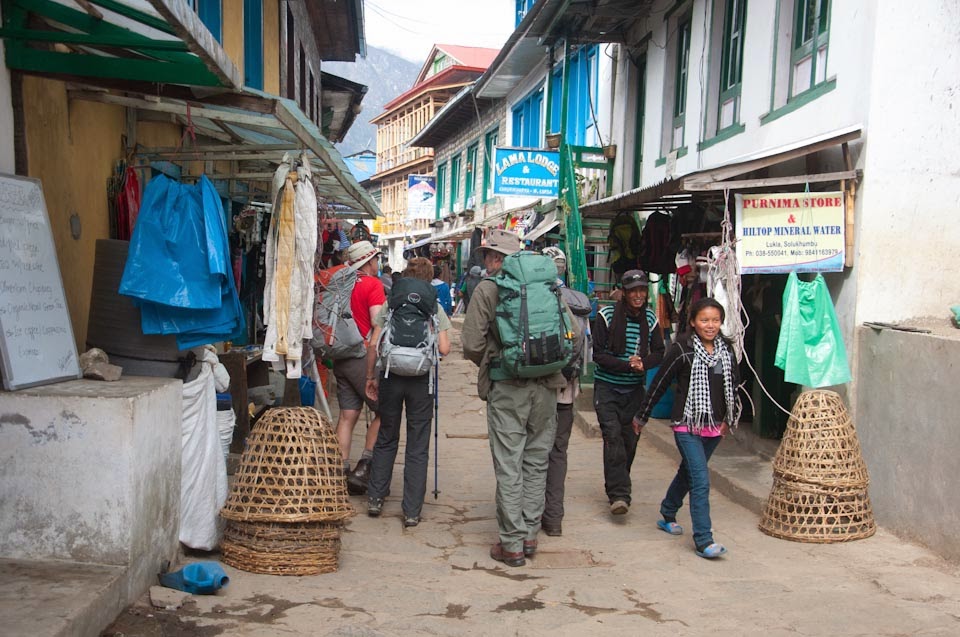
Imagine a mud-map looking like a 3-pronged pitchfork. The trek commences at Lukla , the base of the pitchfork handle. You follow a river up a valley for 2 days then ascend to Namche Bazaar which is the top of the pitchfork handle. Kala Pattar and Base Camp are at the top of the right hand side of the fork, Gokyo Ri is the top of the middle fork and Thame is about half way down the left hand fork. Most people go from Namche to one of the destinations then return to Namche, but the High Passes trek takes a “short-cut” across the tops of the forks (and mountains) and links Kala Pattar, Gokyo and Thame without going back to Namche. It is described as a “Challenging” grade trek, and it certainly is!
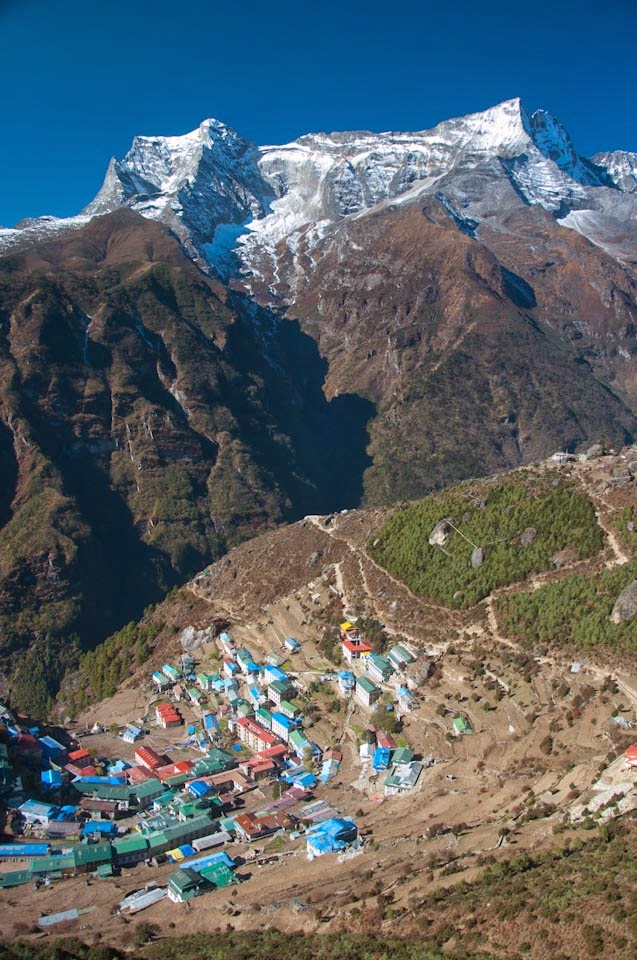
On arriving in Kathmandu I was greeted by our amazingly efficient and energetic trek leader Kim Bannister, and introduced to the rest of the group. There were 14 trekkers, some from the USA, the UK, 2 others from Australia, 1 from New Zealand and 1 from India. There were some youngsters in the 40 -ish age bracket but many of the group were in their 60s and I found later that two of the men were older than I was-the oldest being 69. Encouraging for all of us who are thinking how much longer can I keep up this walking!
After a 25 minute flight to Lukla (whose 350m long runway regularly features on the Worlds most dangerous airports TV shows!) we set off with our daypacks-this style of trekking involves eating and staying overnight at lodges, with all your other gear carried in a duffle bag on the back of a yak. All you have to do is walk, talk and take photos-sounds easy but altitude and the consequent lack of oxygen are what makes it so difficult.
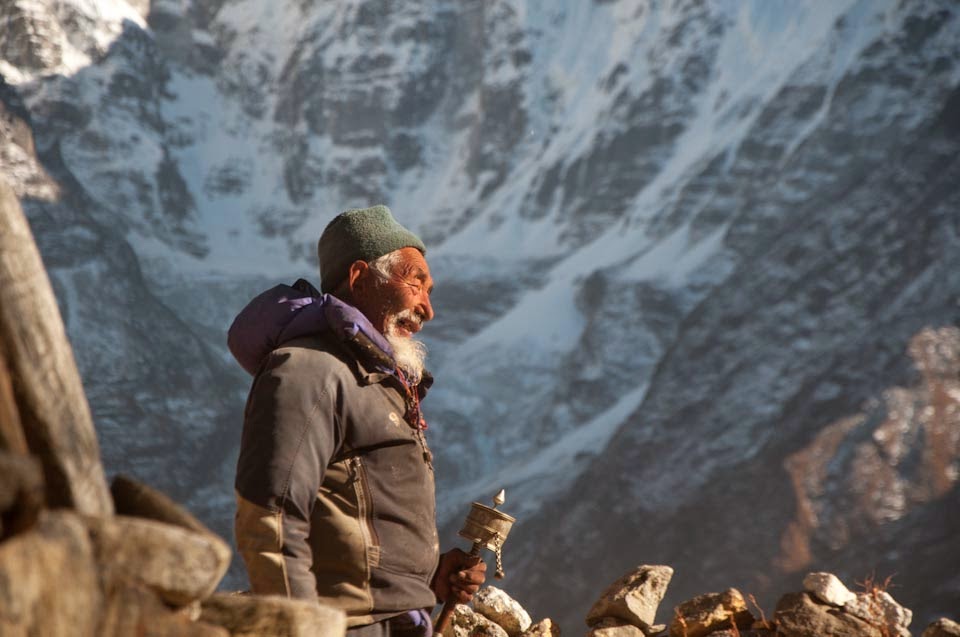
By Day 2 we were at Namche Bazaar-a very tourist orientated town which offers internet, bakeries, lots of shopping and many many lodges and trekkers. We spent 2 acclimatization days here, and on the rest day walked to the village of Khunde, viewed the reputed Yeti scalp at the monastery and visited the hospital founded by Sir Edmund Hilary. The hospital’s doctor was the uncle of our main Nepali guide Lhakpa-in fact we were to meet many of Lhakpa’s relatives along the trek and we were very warmly welcomed whenever we stayed at a lodge run by his family.
Day 3 we headed off to Phortse- a bit of a detour off the main Everest trail. It was nice to have a quieter place to stay although during the night there was a minor earthquake which I slept through unaware!
The next two stops (Pangboche and Dingboche) were on the main Everest trail then we detoured to spend 2 nights at Chhukhung- small village visited mainly by those going to Island Peak, and we saw a group of serious climbers checking their gear for a mountain ascent. The rest day was another walk with the option of going as high as 5500m. I was a bit tired, and only went to 5000m but still had a magnificent view of the surrounding peaks.
From Chhukhung two of our group took the option of the Kongma La pass to Loboche, with the rest of us returning down to Dingboche then meeting the others at Lobuche via an easier route. One of the good things about Kim’s treks is there are options available- she has sufficient guides so as to have at least two guides with each group if the group splits into two. After Lobuche we trekked to Gorak Shep, (5175m)- a small village only occupied during the trekking season-it was now Day 12 of our trek. Although Gorak Shep is only about 50 kms from Lukla, you need to travel slowly so as to acclimatise and avoid altitude sickness which can be fatal.
We arrived at Gorak Shep around midday and most of the group opted to do the ascent of Kala Pattar-the nearby peak of 5640m. I had been here in 2006 but due to a number of factors, (bitterly cold weather, worrying about Rob lying sick in the lodge, trying to go too fast) I had only made it about 1/3 of the way up and had to turn back due to dizziness. However in 2012 it was a glorious sunny day, I had plenty of time to get there and after 2 and a bit hours I was absolutely delighted to get to the top and enjoy the magnificent views of the Everest Panorama-I felt that I had conquered my own “little” Everest!
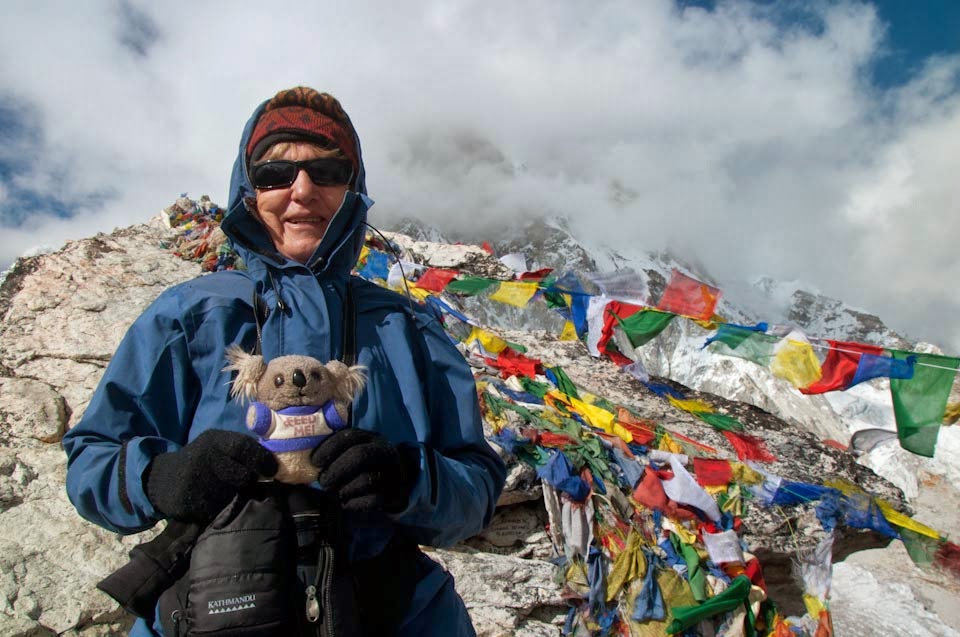
That night was the coldest we had experienced so far-at 5pm one of our trekkers said it was minus 6 in his room! The hot water bottles supplied on this trek were particularly appreciated plus I wore 6 layers to bed. The next day 6 of us plus Kim and Lhakpa left for Base Camp (5365m)-about a 5 hour return trip from Gorak Shep. Unfortunately the effort of yesterday’s ascent combined with a restless sleep and lack of oxygen took its toll and after about an hour of staggering dizzily along to Base Camp I decided to err on the side of caution and return to the comfort of the lodge. Lhakpa phoned one of our guides (the Everest area has internet and mobile coverage!) who came and met me and made sure I got back safely. When the other 5 returned later they were all pooped from what was a very strenuous walk in thin air. A second night was spent at Gorak Shep and it was just as cold-some light snow fell overnight and there were pretty ice patterns on my bedroom window.
After Gorak Shep we left the main Everest Trail and stayed at Dzongla before going over the Cho La Pass. I had a moment of horror as Kim explained the pass was unsuitable for Yaks and we would need to carry all our gear for the next night, meeting the Yaks (who go the long way round) in 2 days time. She thankfully went on to say one of our guides was to carry all 14 of our sleeping bags, (mine must have weighed around 2.5kg as it was super warm!) so we just needed to carry sleep stuff, warm day gear and water.
The pass began with a reasonably gentle ascent (although at 5000m even a gentle up is a huge effort), then a steeper climb then a rock scramble (obviously not for Yaks!) then we put Yak Traks (micro-spikes) over our boots to cross a glacier and snow to the top at 5420m with another stunning view. We met a group coming the other way with a very distressed lady suffering altitude sickness-this group did not have any spikes for the snow (or a Sat phone for emergencies) so Kim gave the lady one of her sets of spikes to help speed her descent. We went down a steep rubble-strewn descent then several kms of trail to our overnight stop of Tangnak.
Day 17 and we made our way across the Ngozumpa glacier to Gokyo (4790m) rejoining the main trail and our yaks. We had the option of ascending the Gokyo Ri (peak) that afternoon or lazing in the lodge which sits by the lake-I took the laze option with a short walk around the lake then a great hot shower- boiled water in a can out in a tin shed but complete with an adjustable hot and cold tap-luxury indeed! We had two nights at the beautiful Gokyo (my favorite spot!) and next morning I slowly ascended the peak (5360m) to see the amazing view of the lake, the glacier and many many mountains including Everest-well worth the 2+ hours ascent. Some keen trekkers went up later for the sunset (when it was bitterly cold) but I just enjoyed seeing the photos!
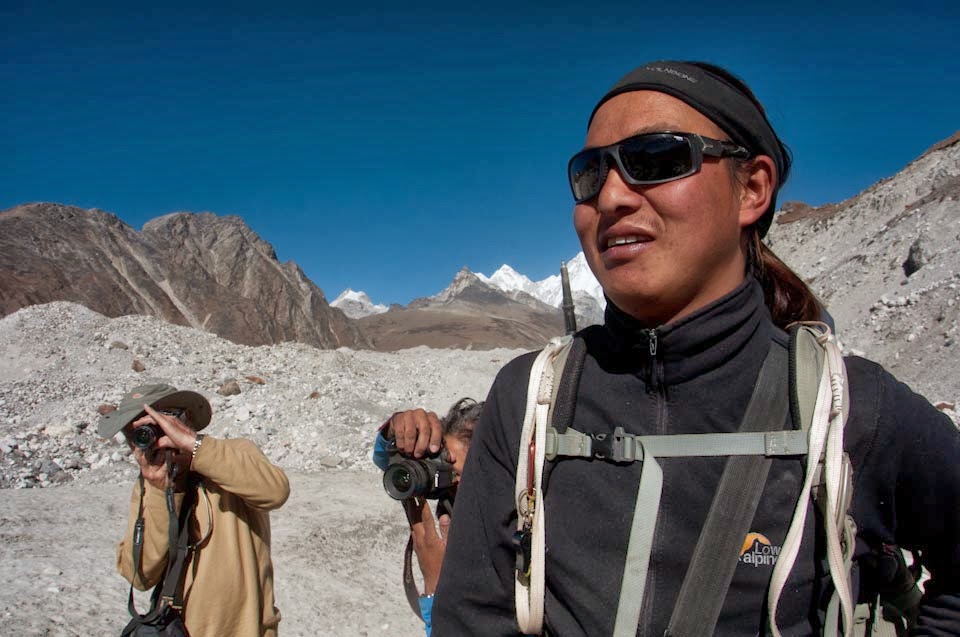
Day 19 and we were to cross the Renjo La Pass-from Gokyo it looked impossibly steep and Kim said it was harder than the Cho La (and a bit higher at 5415m). I considered taking the easy option of the main trail back to Namche but encouraged by Kim and my fellow trekkers confidence that I could do it, I decided “give it a go”. Although it was a long and very tough slog, the view at the top looking back to the lake and Gokyo with the mountain background was just breathtaking-I was so glad I did that pass as it was one of the best views of all time.
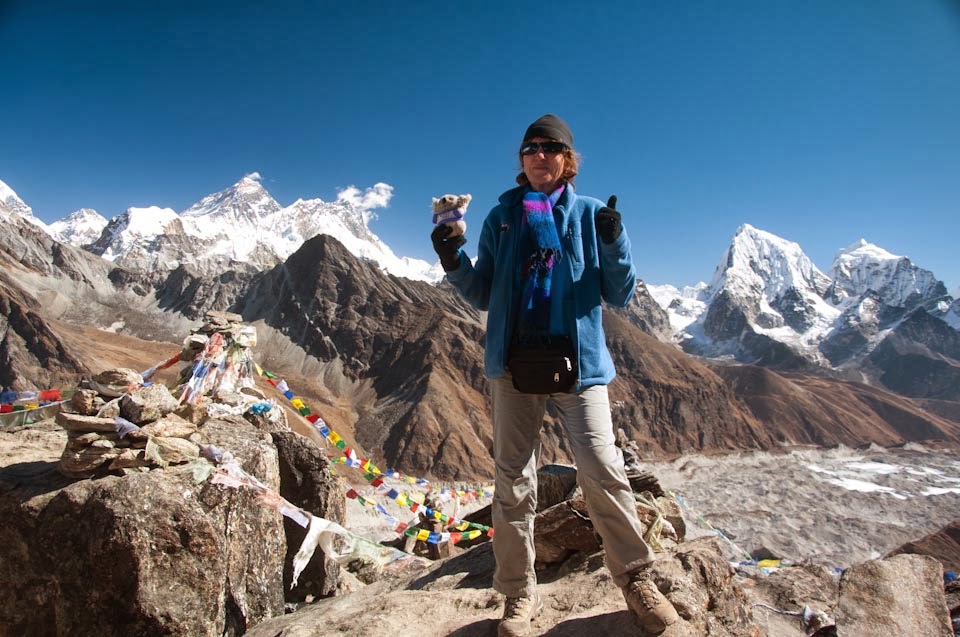
Three of our group were experiencing health issues (heavy chest colds etc) and they did a heroic job to ascend such a tough pass while feeling so sick. The descent was on a wide stone staircase and easier than the previous pass, and we kept seeing bunches of lycra clad runners competing in some marathon-complete with ribbons to mark the way and officials to check progress-we were having trouble walking and here were all these people running at altitude!!! Our overnight stop was the quiet village of Lungden and we were happy to know it was all downhill (so to speak!) from now on.
Next day was a visit to Lhakpa’s mother’s place where we lunched on the best potato pancakes ever. Lhakpa’s 14 year old son had been with us for his first High Passes trek (taken in his school holidays) so he enjoyed lunch with his grandmother and aunt. We overnighted at Thame where one of our group, normally a teetotaler sampled the local tongba-a fermented millet beer in a bamboo container with hot water and a straw. We kept waiting for some crazy behavior from him but he managed to stay well behaved! Then it was back to Namche, some last minute shopping and a final big days walk to Lukla. At the Lukla lodge our rooms all had an ensuite toilet and a hot shower-wonderful luxury after 20 days of more basic facilities. We enjoyed a lovely meal and said our goodbyes to our wonderful trekking crew.
The next day was a flight on a tiny 8 seater plane with 1 propeller-even scarier than our arrival in the 20 seater plane. Half of our group (including me) was on the first flight and arrived in Kathmandu to hear the rest of the group had to stay an extra night as the winds became too dangerous for any flights to leave. They arrived the next day and a celebration dinner was held at the Yak and Yeti which surely has the best buffet meal in Kathmandu.
The trek was organized by Project Himalaya (www.project-himalaya.com) and Kamzang Treks (www.kamzang.com)-a small western group based in Kathmandu whose wonderful Nepali staff were there every step of the way to make our trek just that much better. Although the magnificent scenery and excellent weather were available to all trekkers, it is so important to have your trek group take enough time to acclimatize, have all the right safety gear and have helpful guides at all times. We were fortunate enough to have all this plus a wonderfully friendly trek group. We also visited several ancient monasteries and met many of Kim’s Nepalese friends along the way, thus adding to what was a truly wonderful and immensely satisfying trek.
